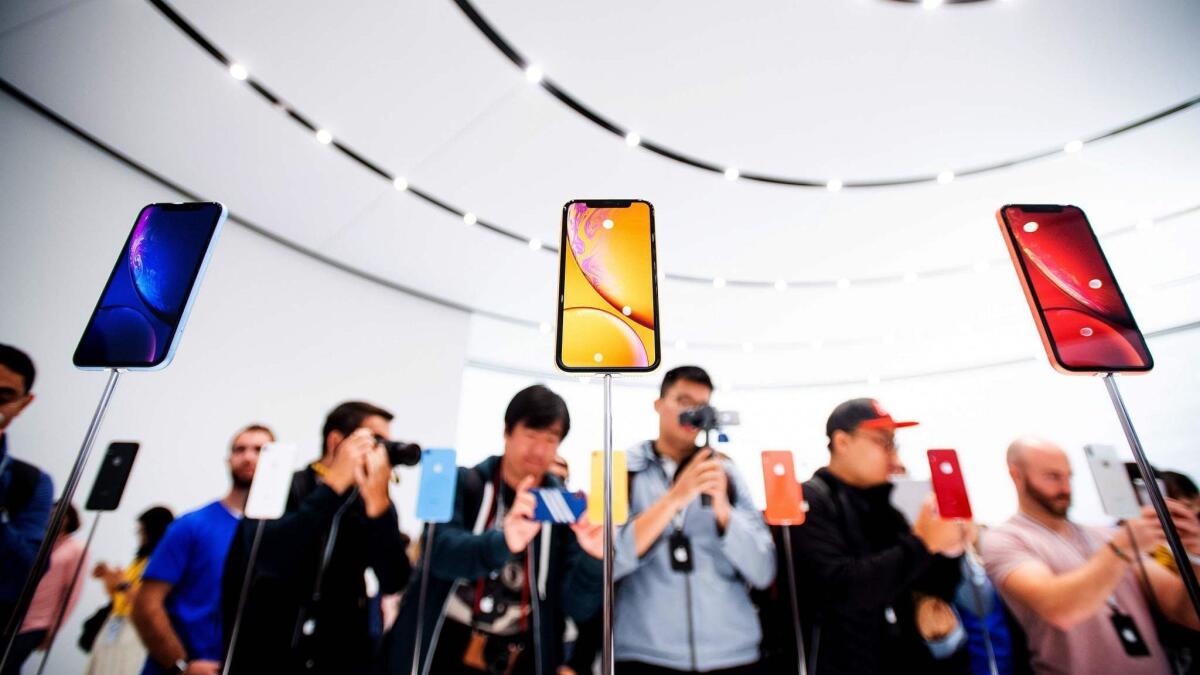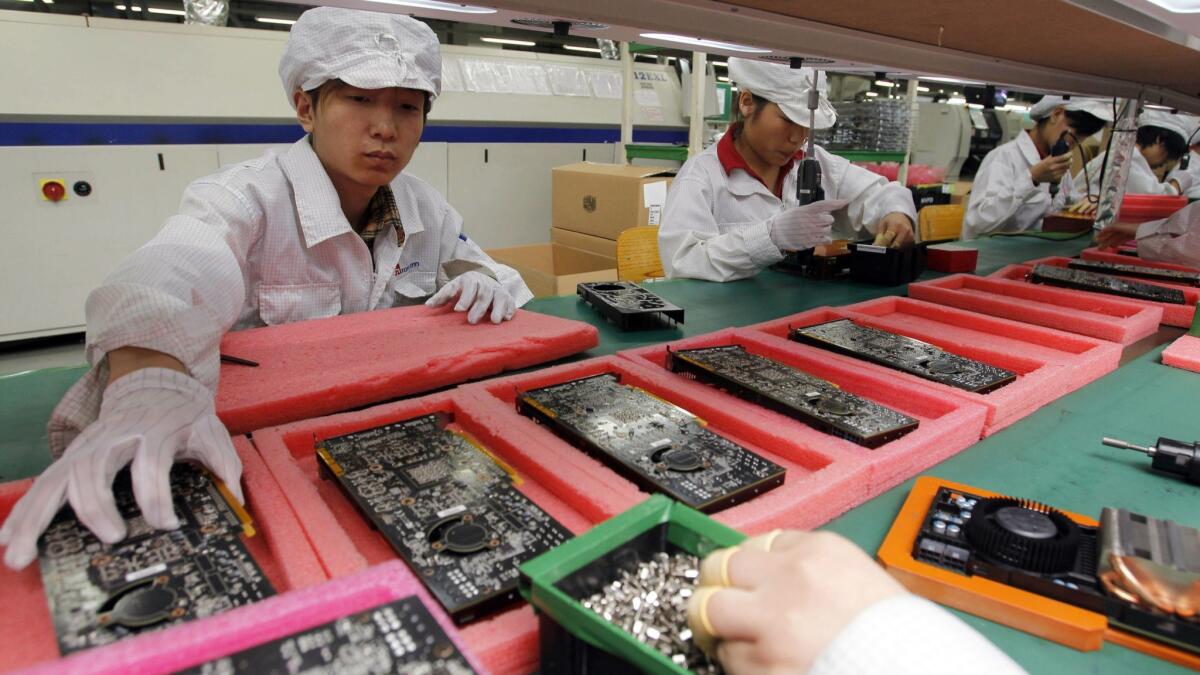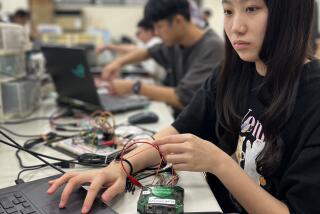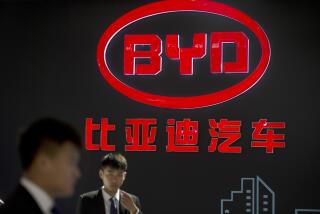Your iPhone is already made in America

It wouldn’t take much for Apple Inc. to have U.S.-sold iPhones made outside China.
Foxconn Technology Group, the primary assembler of the devices, said Tuesday that it has enough capacity to make all iPhones bound for the U.S. outside of China if necessary because of Donald Trump’s tariffs on Chinese products. Apple hasn’t given the Taiwanese company such instructions, a senior executive of Foxconn’s listed flagship Hon Hai Precision Industry Co. said.
The question for Foxconn, Apple’s leadership, the U.S. administration and everyone else, though, is: What does “made” actually mean? This isn’t an esoteric question. As the technology and trade war escalates, billions of dollars hang on the answer.
That it’s feasible to avoid a “Made in China” label appears to have come as a revelation to many.
Let me give you an analogy: Chef A designs a croissant recipe, sources and measures the ingredients, mixes the flour, sugar, butter and eggs; Chef B kneads and rolls the dough; and Chef C folds the pastry and puts it into an oven at the correct temperature for the right time.
How the Apple store has fallen from grace »
So, who made the croissant?
Apple has been steadfast in insisting that the iPhone is an American product. That’s not just marketing speak. Not only does it do the design, its U.S.-based team is in charge of sourcing all components, ensuring they all work together, and deciding the layout and assembly of the circuitry that goes inside.
Foxconn is a master at production — kneading and rolling the dough — which means breaking manufacturing down into small, specific steps, and then replicating that process 200 million times per year. Foxconn also does the last step — folding the iPhone pastry and putting it into ovens.
Since the “oven” is in China, iPhones get stamped with “Made in China.” But Apple is right to insist that “Designed in California” be etched onto every device, because that’s where the product is also made.
An iPhone isn’t made only in China and California. It’s also made in Suwon, South Korea, the headquarters of Samsung Electronics Co.; Eindhoven, the Netherlands, where NXP Semiconductors NV is based; in Dallas, the home of Texas Instruments Inc.; and in Hsinchu, Taiwan, where Taiwan Semiconductor Manufacturing Co. is located.
In Trump’s trade war with China, L.A. ports are ground zero »
Who gets the most credit should come down to who adds the most value, in my view.
One way to look at this is through operating margin. While an imperfect measure, this is as good a rule of thumb as any. It tells you the difference between what a company paid to gather the inputs of a product (including staff) and what customers were willing to pay for those inputs after the company added its own value.
By this gauge, it’s clear that Apple really is the “maker” of the iPhone, even though it does very little manufacturing. Foxconn does the final assembly, yet its margins are one-tenth those of its client. Apple’s operating profit last year was $71 billion. Hon Hai, which gets half its sales from Apple, earned $4.5 billion.
Much value is added by other companies, from the southern U.S. to western Europe to northern Taiwan, where margins are even higher than Apple’s. None earn the label “Made in” because there are many more steps still to come.

Only some of Foxconn’s hundreds of thousands of employees in China do final assembly — the stage that garners the “Made in China” stamp. And that last step doesn’t need to done there. In 2011, at the behest of Apple and to get around tariffs, it set up assembly in Brazil. Most of the real work was still done back in China, with manufacturing in South America being more akin to assembling Legos. Nonetheless, the iPhones were branded “Made in Brazil.”
With around 40% of Apple’s sales coming from the Americas last year, and 217 million iPhones sold worldwide, that means around 90 million units per year would need to be manufactured outside China to serve the U.S. market. Roughly speaking, that’s close to 250,000 per day.
Foxconn once set up an entire iPad factory in Chengdu within 90 days, so it’s no stretch to believe that it could put together final-assembly lines for iPhones in a variety of locales — Mexico, Vietnam, Brazil, the Czech Republic, Taiwan — in short order. The company could also staff those factories if the wages are right, which means someone would have to pay the costs.
U.S. President Trump seems keen on removing the “Made in China” label from the U.S., but it really is just that. A label.
Tim Culpan writes a column for Bloomberg.
More to Read
Inside the business of entertainment
The Wide Shot brings you news, analysis and insights on everything from streaming wars to production — and what it all means for the future.
You may occasionally receive promotional content from the Los Angeles Times.










